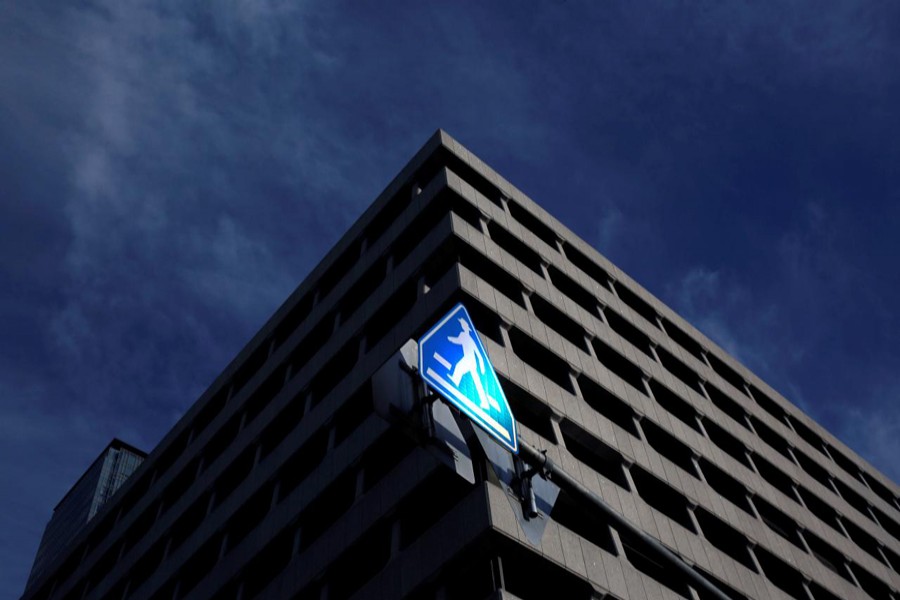Weaker economic growth and tepid price pressures in Asia will leave central banks in the region with few reasons to tighten policy next year — especially as US rate hikes slow — unless a new bout of currency weakness forces them to do so.
The US Federal Reserve on Wednesday raised rates for the fourth time this year, as expected, but signaled a slower pace of hikes in 2019 than it previously projected.
The Fed policy outlook is a major factor driving emerging currencies in Asia and a less aggressive rate outlook next year generally eases foreign exchange selling pressure in economies like Indonesia, Philippines and India. Central banks in these countries hiked rates repeatedly this year to mitigate portfolio outflows and moderate inflation.
On Thursday, Bank of Japan kept monetary policy steady and central banks in Taiwan and Indonesia were expected to do the same at their respective meetings.
“What we forecast for Asia next year is based on the fact that the Fed is going to be more dovish and we have the same view after last night: there’s much less pressure to tighten,” said Irene Cheung, Asia strategist at ANZ.
A long pause in Asian central bank tightening could facilitate more inflows into Asian bonds and offer some respite to smaller-sized, low margin borrowers across south and southeast Asia.
Currency risks aside, there are almost no arguments for central bank rate hikes.
The International Monetary Fund expects Asia’s economic growth to slow to 5.4 per cent next year from 5.6 per cent in 2018. But its APAC director Changyong Rhee told Reuters on Tuesday a further downgrade was possible at the IMF’s next review in January.
Economists say China’s could lose a full percentage point of economic growth next year if the current ceasefire in the trade war between Washington and Beijing falls apart and higher tariffs imposed in 2019.
The rest of Asia could take a similar hit, given the region’s heavy reliance on China for trade and investment.
WHAT INFLATION?
A depressed growth outlook will weigh on inflation, diminishing the argument for rate hikes.
Consumer prices have been surprisingly stubborn this year, despite double-digit currency declines in June-July and an almost 40 per cent jump in the price of oil in the year to October, which has since completely reversed.
The only major Asian economy where consumer price growth has accelerated this year is the Philippines, which posted 6 percent annual inflation in November. However, inflation there is widely expected to fall back in line over the coming year.
“Inflation has been remarkably subdued across most of Asia this year, barely responding to weakening exchange rates and, for a while, soaring oil prices,” said Frederic Neumann, co-head of Asia economics research at HSBC
“Central bankers need to be careful about tightening further. If anything, policy may need to be loosened in some places. China is one example, but more places may follow in 2019 once the risk of excessive exchange rate swings dissipates.”
A December BofA Merrill Lynch fund manager survey showed 53 per cent of respondents expected global growth to slow over the next 12 months, the weakest outlook since October 2008. Only 37 per cent expect global inflation to rise, down 33 percentage points from November and 45 points from an April peak.
CAPITAL RETURN
A slowdown in inflation and fewer rate hikes — most economists now see one to two more in Indonesia and Philippines, if any — are good news for regional bonds.
Already the last two-to-three months have seen investors returning to Asian debt, signaling central banks may have done enough to adjust risk premiums.
The Philippine peso PHP= and the Indonesian rupiah IDR= are still down 5-6 per cent year-to-date, while the Indian rupee INR= is off 9 per cent. These currencies, however, have bounced 5-6 per cent off their troughs already.
The Philippines and Indonesia have hiked five and six times, respectively, this year by a total of 175 basis points each, while India has hiked twice by a total of 50 bps.
Thailand raised its benchmark rate for the first time in seven years on Wednesday, but signalled it had no plans for further hikes any time soon. Malaysia hiked once in January and South Korea once at their last meeting. Moves by all three central banks, however, were aimed at curbing household debt rather than inflation.
In Thailand’s case, there are growing concerns that more hikes could dent its auto sector, a rare bright spot in its economy. South Korea, one of the world’s hottest property markets, is now showing signs of cooling.
Bank of Korea governor Lee Ju-yeol said on Thursday a slower Fed gives global central banks more headroom to manage their monetary policy.
“Additional hikes are a risk but increasingly unlikely as growth slows,” said Philip Wyatt, APAC economist at UBS Global Wealth Management.


